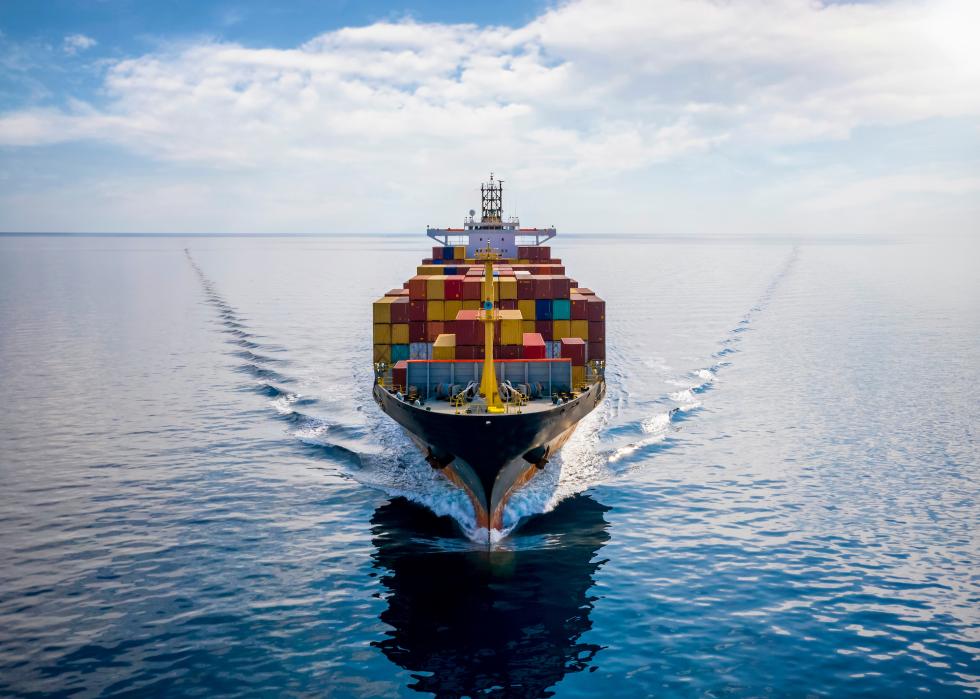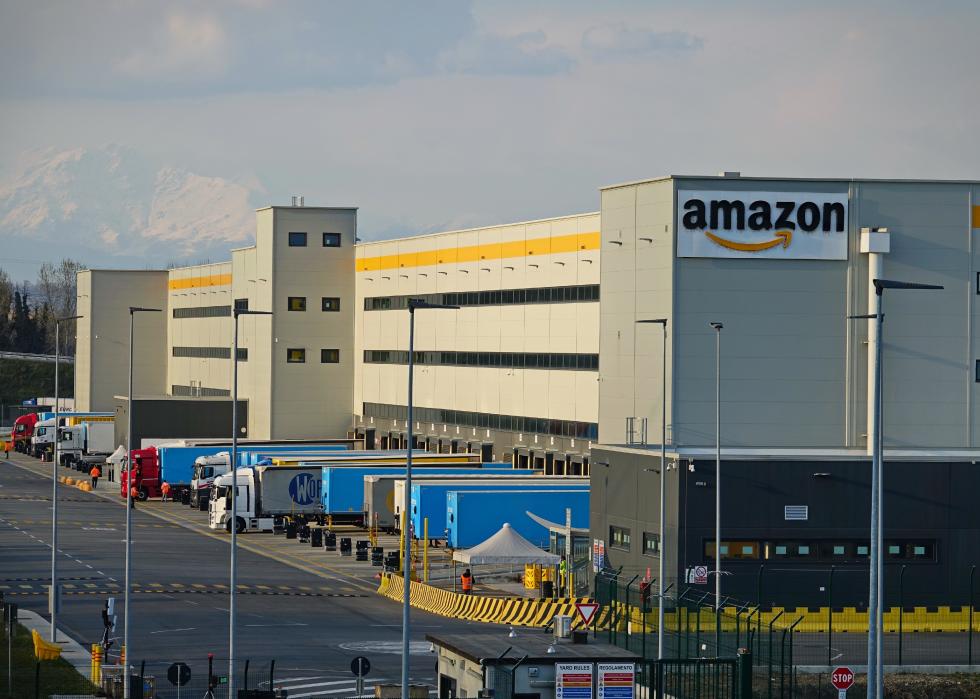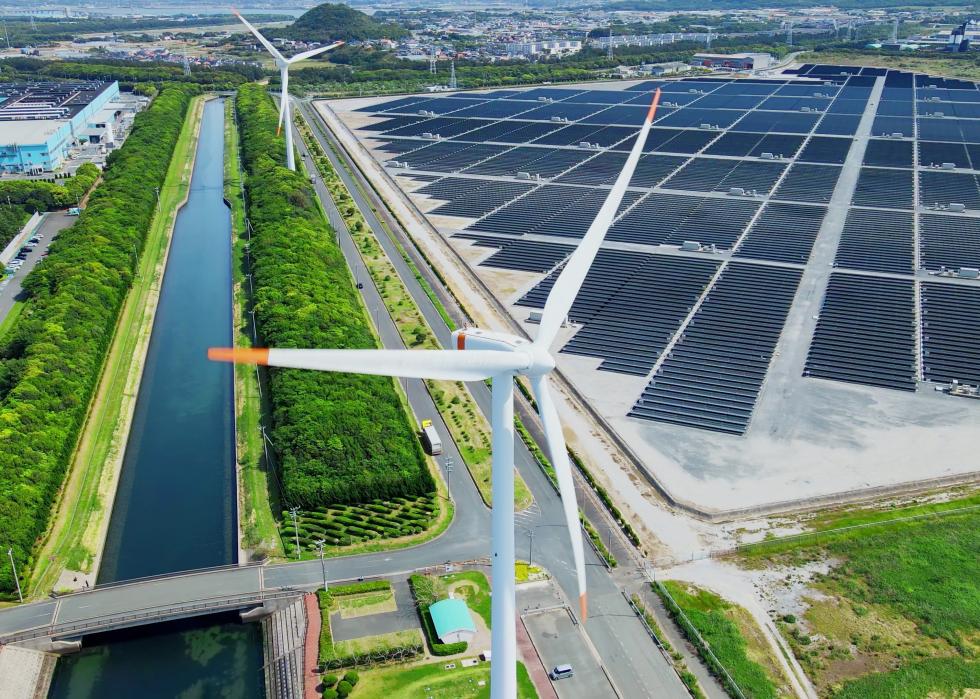
This story originally appeared on Giving Assistant and was produced and distributed in partnership with Stacker Studio.
What to know about carbon-neutral shipping
The U.S. logistics industry is an integrated supply chain network that transports goods to consumers via various modes of transportation. Logistical infrastructure is critical to any successful supply chain, notably key components such as transportation and communication networks.
While established trade routes and shipping arteries facilitated the territorial expansion and the buying and selling of various goods as far back as the early period of the Roman Empire, it was not until the mid-20th century—when the intermodal shipping container was invented—that we began to fulfill the needs of a global network.
More recently, closer attention has been paid to the environmental impact of the shipping industry. To glean a better understanding in this regard, Giving Assistant outlined five key elements of how carbon-neutral shipping works, from recyclable materials to carbon offsets.
Maritime shipping in particular presents myriad issues. According to a 2019 study published in World Seas: An Environmental Evaluation, these issues include air and sediment pollution, ballast water spreading aquatic invasive species, chemical spills, and underwater noise pollution, just to name a few.
A May 2022 New Yorker article goes even further, assessing the negative environmental effects when a shipping container (and its contents) go overboard and into the ocean depths. This occurred on the Tokio Express in 1997, when 62 full containers were jettisoned into the water when the ship ran aground 20 miles off the Cornish coast. Just one of those containers held 4,756,940 Lego pieces, now slowly eroding at the bottom of the sea.
Shipping’s contribution to climate change is also significant. UK Research and Innovation, a multicouncil body operating within the auspices of the U.K. government, estimates shipping produces 940 million tons of Co2 each year, equivalent to approximately 3% of all emissions worldwide. Maritime shipping is also responsible for the emission of black carbon particles, which are produced by the burning of heavy fuel oil.
A study that looked at 2015 global emissions found that 67 kilotons of black carbon were emitted by ships that year, contributing to the overall Co2-equivalent climate warming impact from shipping.
As an interest in carbon-neutrality takes off around the world, it’s important to note it‘s a concept often not fully understood. In general, it is the practice of addressing the shipping and supply chain so as to produce a net-zero amount of greenhouse gasses such as carbon dioxide or methane, but in application and practice it is multifaceted.
Continue reading to learn more about carbon-neutral shipping.

Using recyclable materials and minimizing packaging cuts down the carbon impact of package waste
The Environmental Protection Agency estimates just over 28% of all municipal solid waste produced in the U.S. results from containers and packaging—that is more than 82 million tons annually (as of 2018). The recycling rate that year was around 54%, meaning around 40 million tons of packaging were relegated to landfills.
One of the first and basic steps a company can take toward carbon-neutrality is using eco-friendly packing materials, such as those manufactured with renewable energy resources and made with recyclable or biodegradable materials. By minimizing how much packaging customers receive, package waste and ultimately pollution can be reduced.
A 2020 study by McKinsey found more than half of U. S. consumers are deeply concerned about the need for reduced and eco-friendly packaging, particularly in the wake of COVID-19 and the explosion of online purchasing. So going eco-friendly is not merely a means to carbon-neutrality, it may also be the best way to keep a loyal consumer base.

Optimized shipping routes can reduce the carbon impact of items
While shipping brings great economic benefit, there is a downside: environmental pollutants. The consumption of fossil fuels by ships and air pollutant emissions have an extremely negative impact on the environment.
The optimization of international shipping routes has the ability to reduce carbon footprints. Hence, thoroughly planning ship routes can be effective in a successful overall carbon-neutral shipping protocol. Sailing speed, port selection, and effective planning are all simple factors that should be put into consideration when implementing carbon-neutral shipping.

Spreading inventory across multiple warehouses also lessens the impact of shipping
Choosing to diversify inventory across multiple warehouses has a number of benefits, such as reduced shipping costs and faster delivery times. It also benefits carbon-neutral shipping by significantly reducing carbon emissions via shorter transit times and fewer vehicles required to fulfill shipments.
To put this into perspective, imagine a California-based customer who purchases products from a warehouse in New York. Whether through air or ground delivery, that 2,000-mile journey from the seller to the buyer will expend a great deal of fuel and produce more emissions than if the seller had a warehouse in the same state or region as the buyer.
Larger companies such as Walmart and Amazon have been able to expand in this way, and while it is certainly more challenging for smaller enterprises, options do exist, including renting warehouse space, rather than building or owning, and partnering with logistics companies in order to build a sustainable supply network.

Carbon offsets can make up for the remainder of emissions operators can’t eliminate
A carbon offset is a credit an organization can purchase in an attempt to decrease its carbon footprint. In order for an organization to be considered carbon-neutral the number of acquired carbon offset credits must equal its carbon footprint.
Carbon offset shipping happens when there is compensation for any carbon emitted during transportation. Whether it is accomplished voluntarily or under regulations, revenue from purchasing carbon offsets may also be invested in environmental projects. This helps compensate for the remaining emissions that can’t always be eliminated.

Investments in electric transportation will facilitate carbon-neutral shipping
The push toward electric cars that major auto manufacturers are embracing also applies to freight transportation. Major retailers have begun to recognize this fact—Amazon, which ships more parcels per year than even FedEx, announced its intention to put a fleet of 100,000 electric delivery vans on the road, in an effort to fulfill its promise of carbon-neutrality by 2040.
“We’re trying to build the most sustainable transportation fleet in the world,” said Ross Rachey, director of Amazon’s global fleet and products. The mass retailer this year made further steps in this direction by partnering with automaker Stellantis, which manufactures an electric delivery vehicle.
A 2022 study from researchers at the University of Michigan, in partnership with Ford Motor Company, found that battery-electric light-duty vehicles, such as pickup trucks, have better-than 60% lower life-cycle greenhouse gas emissions than internal-combustion engine vehicles. As pickup trucks are comparable in weight and capacity to the average delivery van, the positive impact of companies going electric in their shipping models is evident.



